Prague is the capital of the Czech Republic and the largest city in the country, with a population of some 1.3 million people. As the historic capital of Bohemia, Prague has a long history as an important seat of power for a succession of rulers.
Arguably the city is the political and economic capital of central Europe. Founded in the 13th century, Prague flourished in the 14th century when it became the capital of the Kingdom of Bohemia and the home of several Holy Roman Emperors.
Later on, it was a key city of the Hapsburg monarchy and the Austro-Hungarian Empire and played an important role in the Bohemian Reformation, the beginnings of Protestantism and the Protestant Reformation, and the Thirty Years War.
Thanks to its wealth and strategic importance, Prague was also a cultural center, and a great many luxurious palaces were constructed in the city by emperors and nobles.
11 Palaces to Visit in Prague
1. The Archbishop’s Palace
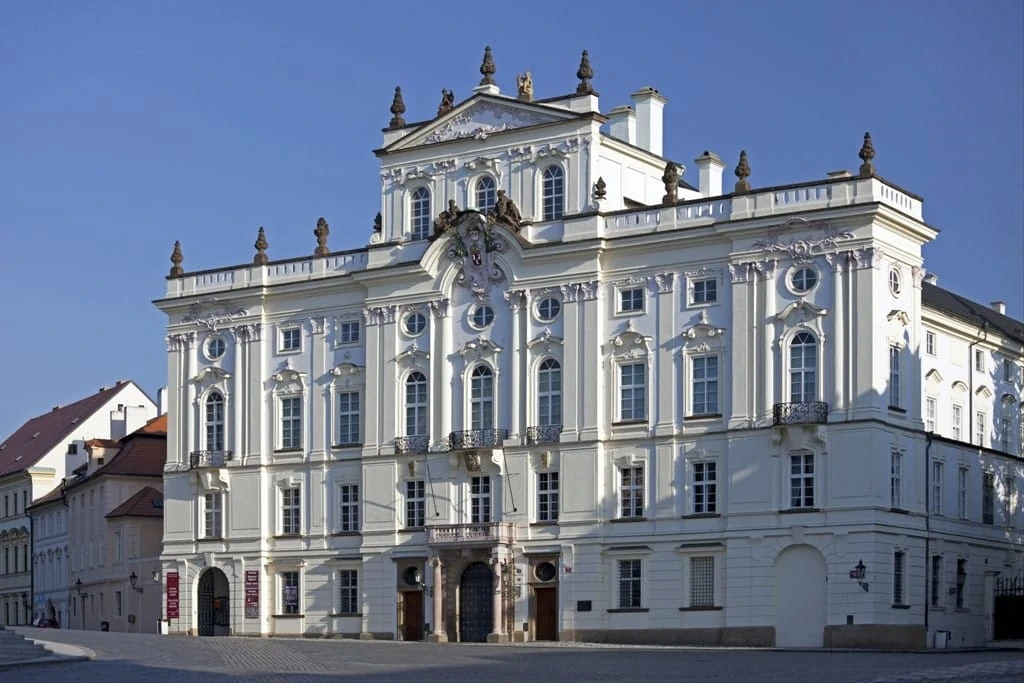
Standing in the north-eastern corner of Hradčanské náměstí, the square in front of Prague Castle, this renaissance palace has been the seat of the Archbishops of Prague since 1562, when it was purchased by Archbishop Antonin Brus.
Built on the site of eight former Burgher homes, the structure of the palace originally belonged to a Bavarian aristocrat and public servant Florián Gryspek, before it passed into the hands of the monarchy, and then the archbishops of Prague.
A large building featuring four wings and four courtyards, the palace underwent a Baroque reconstruction in the second half of the 17th century, before the façades were redecorated in the Rococo style from 1764-1792.
Rococo is an incredibly intricate and elaborate style featuring frescoes, molding, asymmetry, gilding, and pastel colors, giving the Archbishop’s palace the dramatic and exquisite exterior that it has to this day. Today the palace is the headquarters of the Catholic Church in Prague and is not open to the public.
2. Cernin Palace
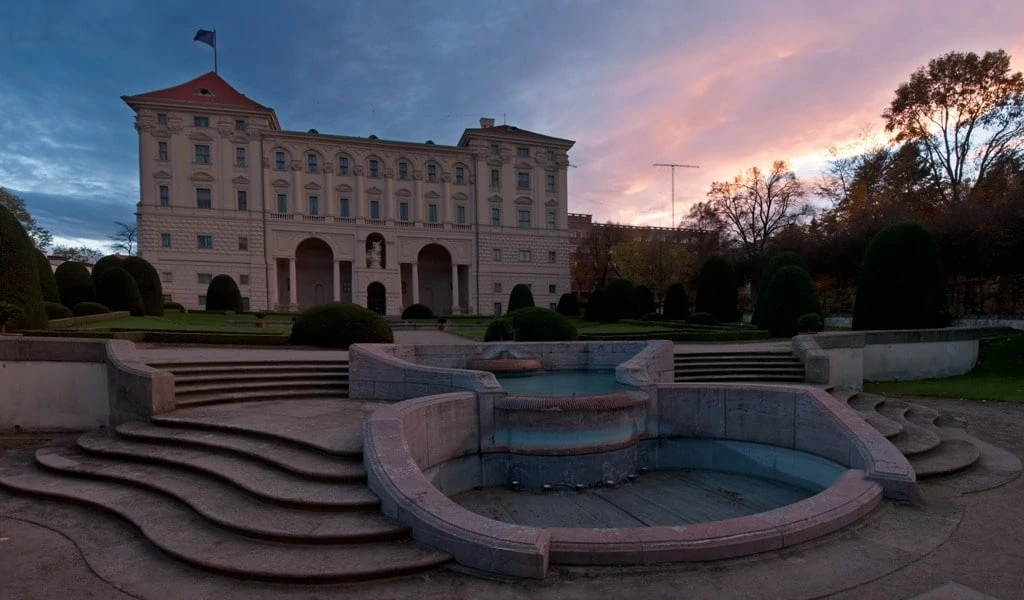
Černín is the largest of the Baroque Palaces in Prague, an enormous building with a 150-meter long façade. Situated in the Hradčany or ‘castle district’, the historical centre of Prague, construction work on Černín Palace began in the 1660s, but was not completed for many decades.
Count Humprecht Jan Černín of Chudenice (imperial ambassador to Venice) who began the construction of Černín as a monumental home, did not live to see its completion.
In 1851 the building was sold by Černín’s family to the Austrian state and it was converted into a barracks, before later being repurposed as the headquarters for the Czechoslovakian Foreign Ministry in the 1920s.
In 1948 the Minister of Foreign Affairs Jan Masaryk was found dead in the palace courtyard – although the death was ruled a suicide, many believed that the minister was murdered by the communists who had seized power a couple of weeks before.
You might also like:
The best castles near Prague
Best castles in the Czech Republic.
3. Palace of the Lords of Kunstat and Podebrady
As the name suggests, this Palace belonged to the lords of Kunštát and Poděbrady: most notably Victor of Kunštát and Poděbrady, a Bohemian-Moravian nobleman, and his son George, who ruled as King of Bohemia from 1458-71.
The future king George lived at the house in his earlier years, which likely dates from around the year 1200. It is one of Prague’s best-preserved Romanesque buildings, with untouched underground vaults featuring distinctive columns.
However, the exterior of the palace has undergone many renovations, including a gothic remodeling in the 15th century.
Today the palace is open to visitors and contains an exhibition on the subject of King George of Poděbrady – George was a Hussite (A Czech ‘proto-protestant’ movement) but encouraged tolerance towards the Catholic faith within his kingdom.
4. Lobkowicz Palace
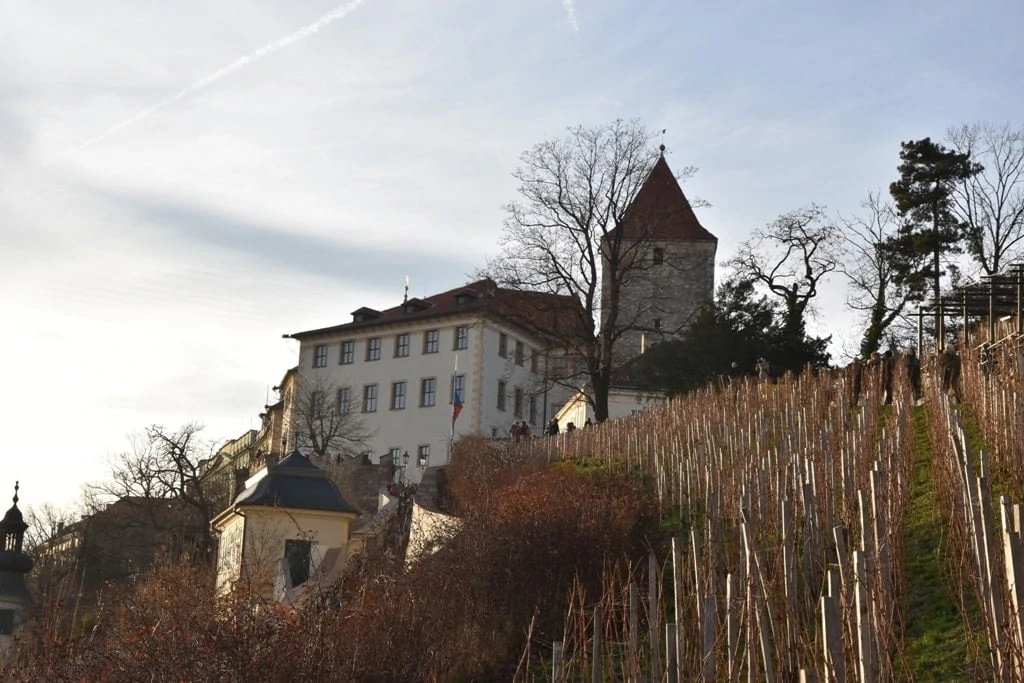
Standing within the Prague Castle complex (the only privately held building in the complex), Lobkowicz Palace is a 16th-century structure that today houses art collections and a museum.
Built during the second half of the 16th century by Czech noble Jaroslav of Pernštejn and completed by his brother Vratislav (who was chancellor of the Czech kingdom), the palace came to the Lobkowicz family through marriage when Vratislav’s daughter, Polyxena, married Zdeněk Vojtěch, 1st Prince Lobkowicz.
After Catholic Imperial ministers were thrown from the windows of the Royal Palace in Prague Castle during the 1618 Second Defenestration of Prague, Polyxena sheltered them within the Lobkowicz Palace. During the next three centuries, the Lobkowicz family grew in power and influence and used their palace as a residence.
From 1939-2002 the palace was confiscated by first the Nazis, and then Soviet authorities – it was used for various state functions before being returned to the Lobkowicz family in 2002. The palace itself was baroque in style, before undergoing an Italianate redesign after the Thirty Years War.
Today the palace is home to the Lobkowicz collection, the oldest and largest privately held art collection in the country. The collection reflects cultural, social, political, and economic life in Central Europe over many centuries and is open to visitors.
5. Schwarzenberg Palace
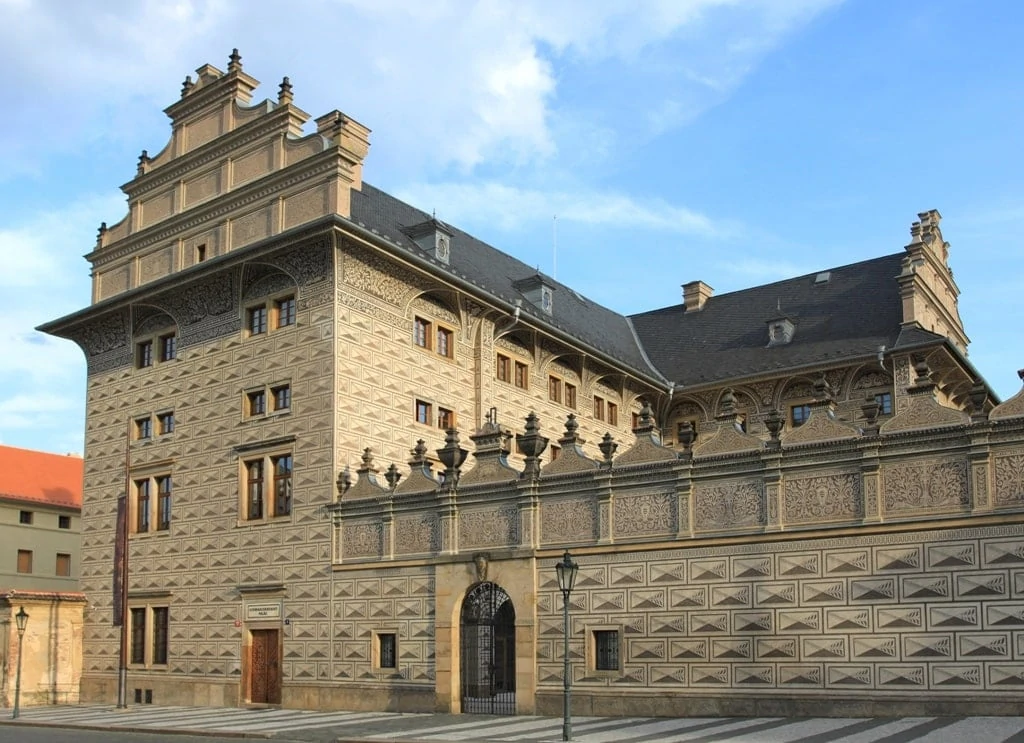
Notable for its black and white sgraffito plaster walls, the Schwarzenburg Palace stands on Hradčany Square close to one of the entrances to Prague Castle. The palace was built in 1567 by the Lobkowicz family on the site of three buildings that had been destroyed by a large fire in Prague during 1541.
The palace itself takes the form of a T-shaped main structure with a western wing, as well as a perimeter wall that encloses a courtyard. Notably, the ceilings inside the palace were elaborately decorated with paintings on canvas, stretched over a wooden framework.
Completed around 1580, the paintings depict famous scenes from antiquity, such as the kidnap of Helen, the Fall of Troy, and the escape of Aeneas. The Palace passed into the hands of the Schwarzenburg family in 1719, who lent their name to the building.
In 1948 the palace was confiscated by the communist regime and became a museum of military history. Today it houses part of the permanent exhibition of the Czech national gallery and is open to the public.
6. Sternberg Palace
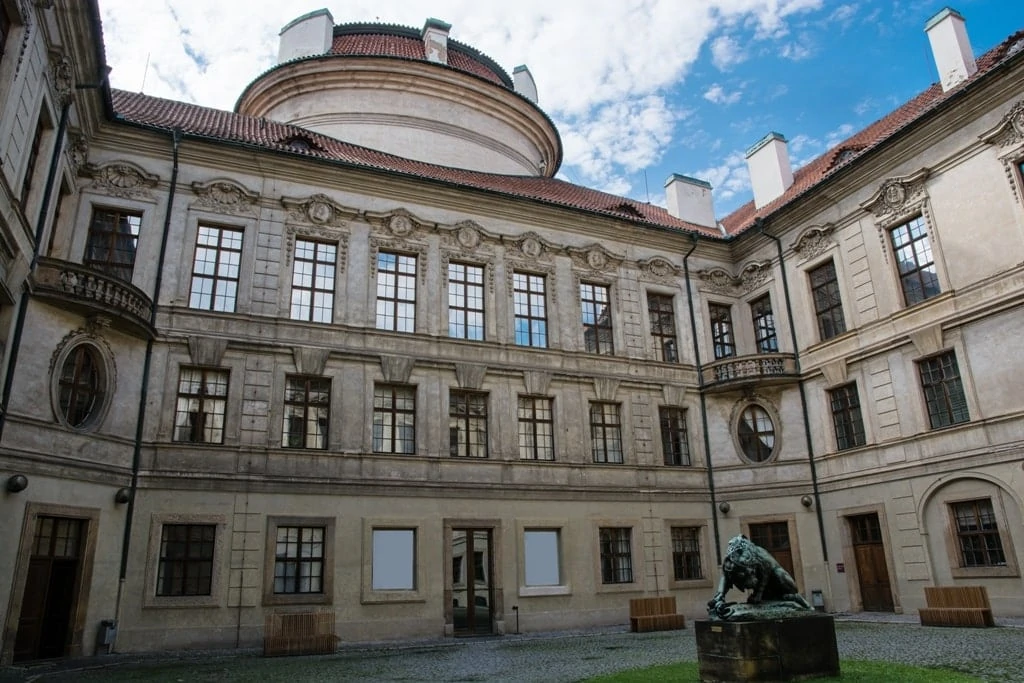
The Sternberg Palace (or Šternberský palác) was commissioned by a member of one of the oldest Bohemian aristocratic families, Count Wenzel Adalbert of Sternberg (1643-1708). Built on the estate next to the Prague Archbishop’s Palace, the Sternberg Palace replaced an earlier medieval house.
The structure itself is a magnificent example of High Baroque, typified by the use of contrast, movement, detail, color, and grandeur to impress and inspire the viewer. Until 1811 the palace was held by the Sternberg family when the Society of Patriotic Friends of the Arts made it their headquarters.
When the society sold the building in 1871 it was used as a psychiatric hospital, and then used by the army in World War I. After the Second World War, it became the home of the new National Gallery.
It has now reopened following renovations in 2002 and 2003 and contains a large collection of European art spanning many centuries, from works of Classical antiquity from Greece and Rome to early modern masterpieces by Tintoretto, Goya, Rubens, and Van Dyck.
7. Wallenstein Palace
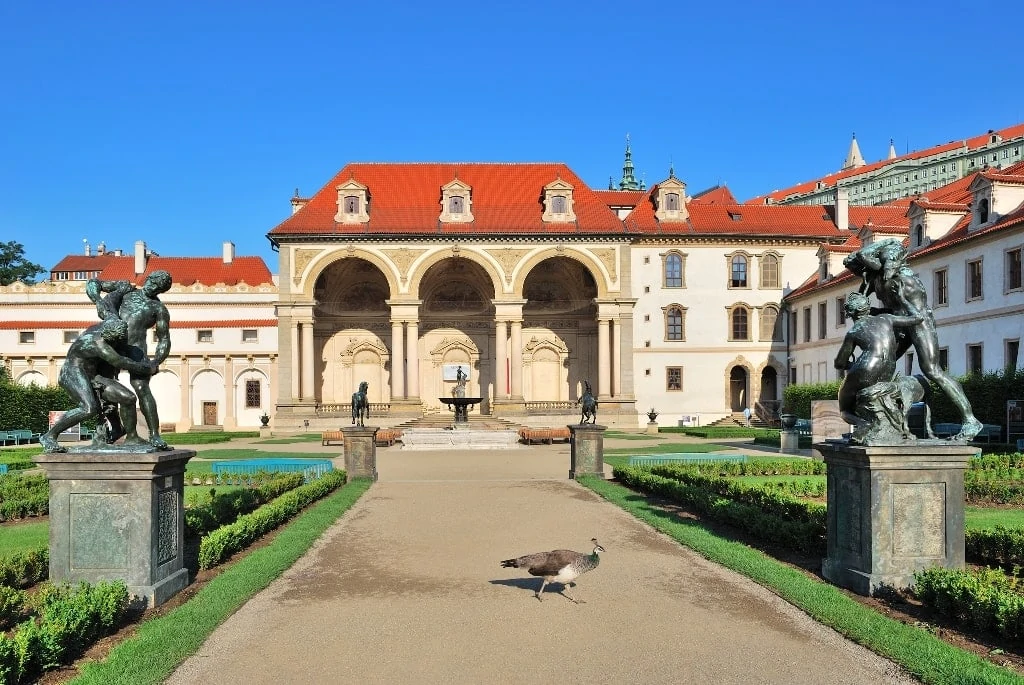
Built from 1623-1630 by Duke of Mecklenburg and Imperial Commander-in-Chief during the Thirty Years War, Albrecht von Wallenstein, this Baroque palace is used today by the Senate of the Czech Republic.
Wallenstein was only able to live in his new palace for a year before he was assassinated in 1634, likely on the orders of Emperor Ferdinand II who feared his potential political power.
Wallenstein had traveled extensively in Italy and used Italian architects and artisans to build his new palace – Baccio del Bianco painted the ceiling fresco in the Main Hall (Which depicts Albrecht von Wallenstein himself as Mars, God of War), as well as figure paintings and other decorations.
Originally the Main Hall of the palace was decorated with tapestries and furniture brought from Italy, but these objects were looted by the Swedes in 1648 or the French in 1742.
The palace is an enormous structure and required twenty-six houses and six gardens to be demolished to make space for it. Laid out around four large courtyards, the palace also features complex gardens and avenues.
Wallenstein Palace remained in the hands of the Wallenstein family until 1945 when it became Czech state property and was used as government offices. Today the Senate of the Czech Republic uses the main buildings, while the riding school is used by the National Gallery.
8. Troja Palace

Situated in Troja, a north-western borough of the city of Prague, Troja Palace is a baroque structure built by the Counts of Sternberg. Constructed from 1679 to 1691, the palace’s design was influenced by French and Italian architecture and was mostly designed by the French architect Jean Baptiste Mathey.
The interior of the palace was highly decorated with elaborate ceiling and wall paintings – the brothers Abraham and Izaak Godijn painted fine baroque frescoes throughout the structure depicting the history of the Hapsburg dynasty, as well as celestial scenes.
Troja also has an ornate stairway connecting the palace to its gardens, featuring sculptures of antique gods and goddesses. The palace was purchased by the Czechoslovakian state in 1922 and restored in the 1970s – today it is a popular beauty spot, thanks to its lovely gardens and close proximity to the Vltava river. The grounds of the palace are also used to host concerts.
9. Queen Anne’s Summer Palace
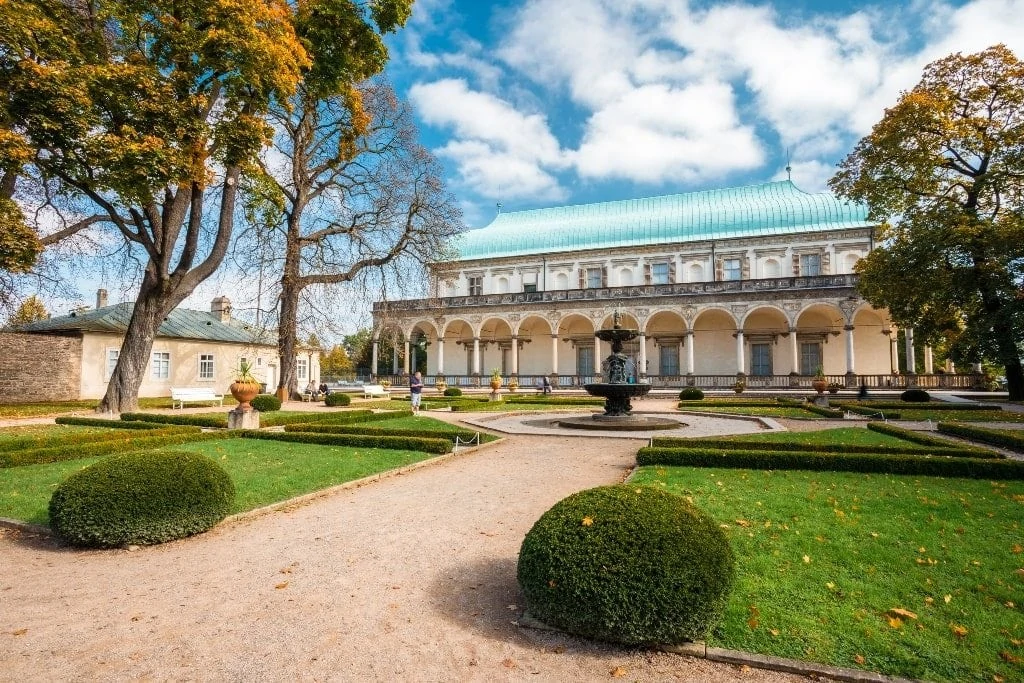
Located in the grounds of the Royal Garden of Prague Castle, this Renaissance structure was built by Holy Roman Emperor Ferdinand I as a summer palace for his wife, Anne Jagiellionica. Built between 1538 and 1560, the summer palace was constructed at the same time as the Royal Garden.
Unfortunately, neither Anne nor the building’s designers, architects Paolo della Stella and Giovanni Spatio, lived to see it completed. The palace itself consists of a ground floor with an arcade gallery surrounding the whole building, as well as an upper floor with residential rooms, a dance hall and a gallery.
The building also has a copper roof which was a later addition. The whole structure is a beautiful example of Renaissance design with its arcades, Ionic columns, and stone reliefs showing scenes of mythology, hunting, and wars.
There is also a water work known as the ‘singing fountain’ in front of the summer palace – the flowing waterfalls into a bronze bowl, creating a noise which makes the fountain ‘sing’ if you listen very closely.
Queen Anne’s Summer Palace was used very little after its completion until Holy Roman Emperor Rudolph II (1576-1612) converted the first floor into an astronomy observatory and used the rest of the palace to house guests.
Later the structure was used as a base for Swedish soldiers during the Thirty Years War, before being repurposed as an artillery laboratory for a time.
In the 19th century, the building was vacated by the military and restored, before serving as an exhibition hall in the 1950s. In 1962 it became a National Cultural Monument and has been used as an exhibition space since then.
10. Žofín Palace
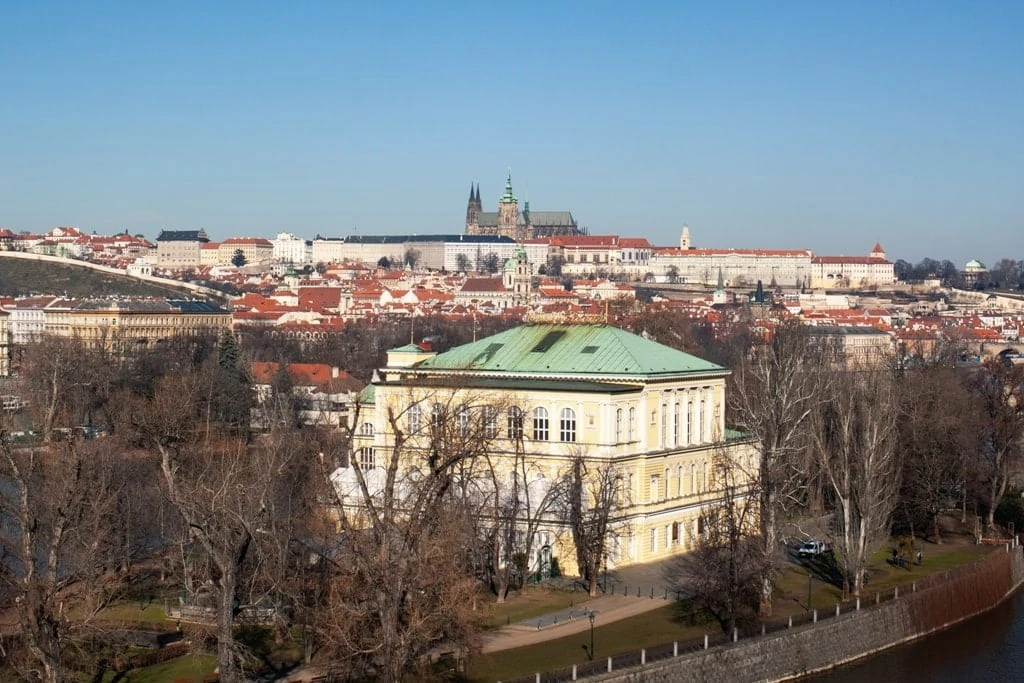
With its incredible yellow façade, Žofín is distinctive a Neo-Renaissance palace built on Slavonic Island in the Vltava river in New Town, Prague. The island itself only formed in the 18th century – after being damaged by floods in 1784 it was reinforced with a wall and planted with trees to make it more stable. In 1830 the island was brought by miller Václav Novotný who built a Neo-Renaissance structure in 1836-37.
It was named after the mother of Austrian Emperor Franz Joseph I, Princess Sophie, and consisted of a single-story building with a concert hall and social hall. In 1884 the island was purchased by the City of Prague and the palace was rebuilt into the two-story structure that stands there today.
The exterior and interior were renovated from 1991-1994, and the palace still serves as a venue for musical events, as it has throughout its history. In 1848 the Prague Slavic Congress was held at Žofín Palace, and since 2005 the annual Forum 2000 conferences have met there. Many famous composers have also performed at the palace, including Dvořák, Berlioz, Liszt, Tchaikovsky, and Wagner.
11. Kinský Palace
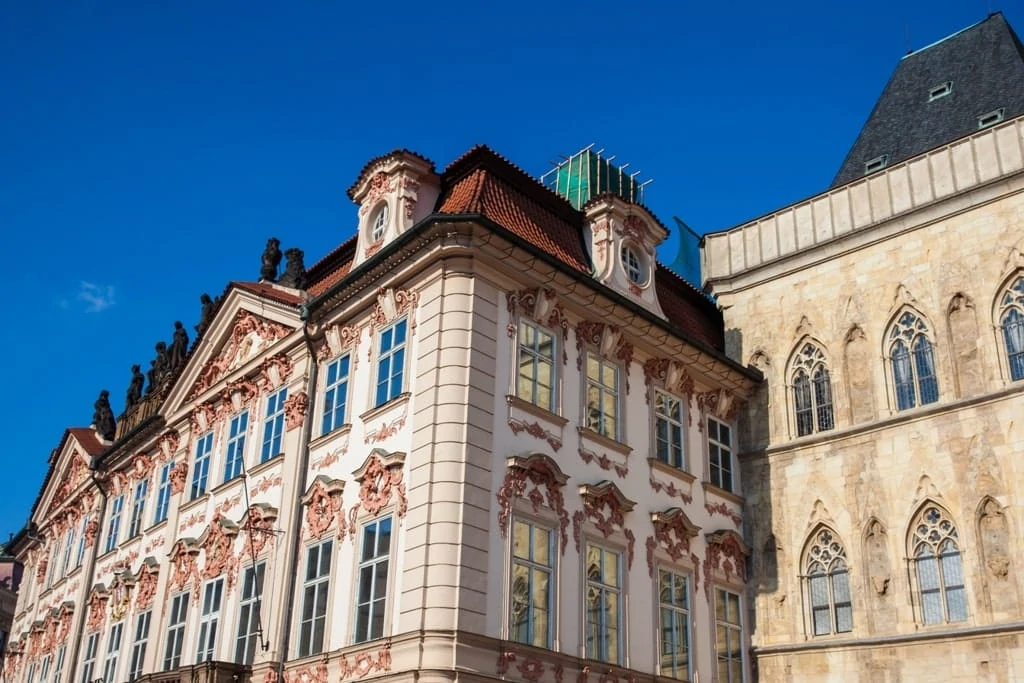
Built on the Old Town Square in the Old Town area of Prague, Kinský is a Rococo palace with an elaborate stucco exterior, decorated with pink and white paint. Originally built for the Golz family between 1755 and 1765, the palace came into the possession of the Kinský family in 1768.
Constructed on the site of three early medieval houses, 12th-century Romanesque masonry rooms are still preserved in the palace cellars to this day. In the 1830s the palace was extended northwards when another building was attached to it and decorated in Neoclassical style.
In its entirety, the palace consists of the main structure facing the square, a left-wing, transverse wing, two lateral wings, and a building on Týnská street. Since 1949 the palace has been held by the National Gallery and currently contains an art museum.
